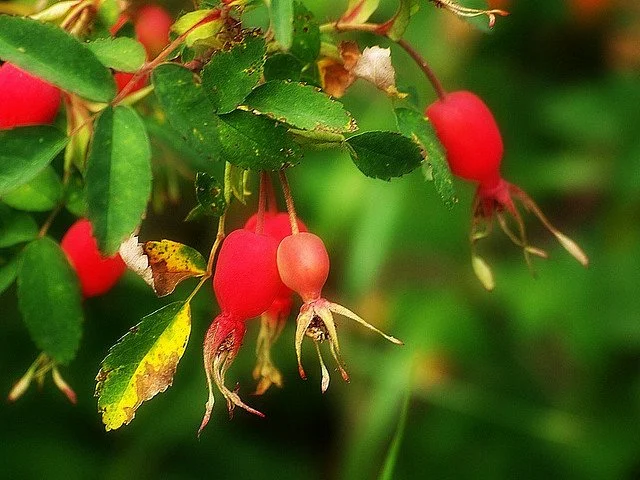Nootka Rose
Latin name : Rosa nutkana
Hul'qumi'num name : Qel’qulhp
“Qel’qulhp can be found in a wide variety of habitats on the edges of meadows, open fields and roadways. They can form dense thickets that can overtake open habitats. The flowers develop into rose hips—a seedy, waxy fruit. Qel’qulhp is the name for the plant; qelq is the flower. The flowers— particularly the petals— are edible. The rose hips are also edible and are said to be very rich in vitamin C. Rose hips have medicinal and spiritual values, and can also be used to make tea or jelly. Their shoots (the’thqi) when short and pinkish red are very good eating, particularly sweet if growing in the sun.”
Except from Hul'qumi'num Ecosystem Guide
Nootka rose (Rosa nutkana) is a wild rose species native to western North America, particularly along the Pacific Coast and parts of Alaska. This deciduous shrub is known for its fragrant pink to deep pink flowers and distinctive, bristly stems. It plays a crucial role in the region's ecology and has both cultural and medicinal significance.
Nootka rose serves as a beautiful and functional part of the Pacific Northwest's natural and cultural landscape, contributing to both its ecological diversity and traditional heritage.
Distinguishing Features: Leaves are light green, with toothed edges, and prickles at the base of each leaf. The leaves grow in pairs up the stem. Blooms in June and July with large pink flowers of five petals that grow out from a yellow centre (5 cm across). Flowers grow singly at the end of the stem. Fruits are red pear-shaped hips that remain on the plant throughout the winter. Grows in thickets up to 3 m tall along stream banks, the edge of meadows, and forest borders.
How and what to harvest (stock, leaf, bark etc): Pick flower heads and then individual petals. Cut branches for leaves and hips, or pick hips individually off of branches.
When to harvest: Flower petals - spring and early summer. Rose hips and leaves - fall
The plant's resilient, flexible stems have historically been employed in crafting baskets and cordage, and its notable vitamin C content has made it a traditional remedy for fortifying the immune system and managing conditions like colds and flu. Furthermore, rosehip oil, extracted from its fruits, is prized in skincare for its moisturising and nourishing qualities.
In addition to its medicinal uses, the rose has a profound emotional impact, symbolising warmth, love, and emotional protection. Its petals and hips are not just ornamental; they are also edible and can be used to create delightful teas, jellies, and syrups, providing valuable vitamins and antioxidants. Rose petals, when steeped in tea, infuse it with flavor and sweetness, while rose hips are nutrient-rich and vitamin-packed. Internally, rose tea has been used to treat various ailments, including diarrhea, mouth sores, sore throat, sore eyes, irritated skin, burns, and bleeding, while topical applications can improve skin conditions.






